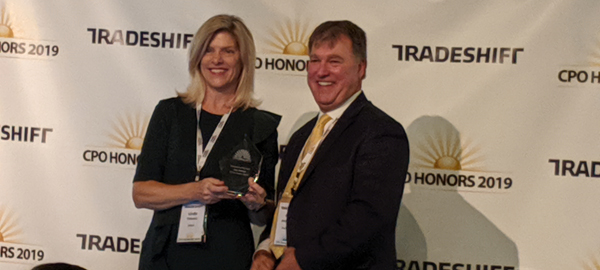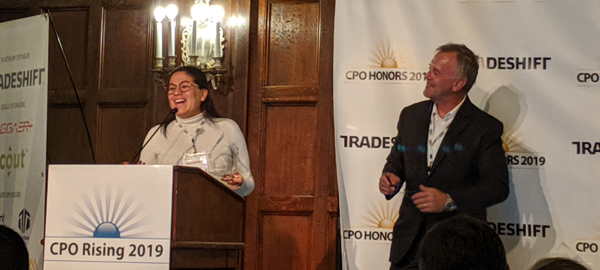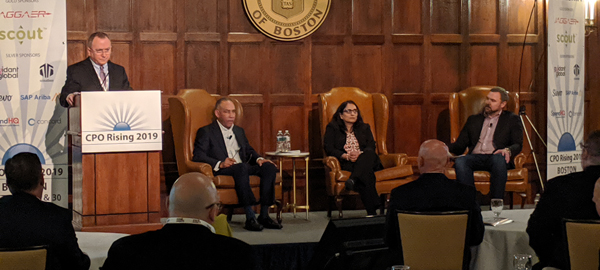At CPO Rising 2019, Delegates Learned the ABCs of New Procurement Technology

Two weeks ago at CPO Rising 2019, I delivered a breakout presentation in which I spoke on artificial intelligence (AI), Blockchain distributed digital ledgers, and Connected Devices/the “Internet of Things” – the ABCs of New Procurement Tech – and the impact that they are having and will have on procurement in the decade ahead. Now, I know that I’m no Blake (Alec Baldwin) from Glengarry Glenross, but I like to think that I earned my coffee that day (and every day leading up to Ardent’s fourth-annual procurement executive summit). Do I have your attention now?
The ABCs of New Procurement Tech
AI: On AI, I gave some backstory on the term, and sought to clarify what AI is and what it isn’t, including some popular definitions and distinctions – like how there’s Narrow AI (like machine learning, natural language processing, and robotic process automation), and Artificial General Intelligence (like deep learning, neural networks, and fully-autonomous, self-learning systems). I then gave some examples of procurement use cases for AI – like guided buying and predictive purchasing.
Blockchain: On Blockchain, I again gave some historical context (it was invented only a decade ago), and really tried to explain what Blockchain is – a distributed, decentralized database that acts as a ledger for all transactions, changes, and movement. Everything you do on a blockchain is permanent, cannot be changed, and is open to others to see (especially on “open” blockchains). So it drives great transparency into transactions – especially those across extended supply chains. On that note I shared a couple of use cases for Blockchain, such as supply chain track and trace, and smart contracts that are written into the Blocchain’s code that automatically execute and fulfill.
Connected Devices: On Connected Devices, or what we also call the Internet of Things, I talked about how advances in sensors, processors, and transmitters enable them to be embedded within everyday items, machines, and products – like thermostats, utility poles, gas/electric meters, commercial equipment, and so on. This enables the automatic transmission of critical business intelligence point-to-point, or machine-to-machine. They’ve long-been used by manufacturing, and use cases for procurement have started to emerge, like helping procurement teams get ahead of managing maintenance, repair, and operational services (MRO) spend, and syncing with Blockchain digital ledgers to link the physical and digital supply chains to enhance track-and-trace.
Summary
Artificial intelligence for procurement has already started to become a reality, even if for now we’re still applying “narrow” AI to the discipline. Blockchain use cases for procurement, such as supply chain track and trace, smart contracts, and now supply chain financing and payment reconciliation, continue to be modeled, explored, and piloted, although the technology has some issues of scale to work out, like high energy consumption and effective aggregation of disaggregated commodities (like bulk coffee).
For their part, connected devices / IoT continue to collect and transmit vital operational intelligence to procurement, manufacturing, and services, allowing these departments to get ahead of MRO and budget accordingly. If industry can iron out some integration and deployment issues, IoT-integrated Blockchain can be the missing link for linking the physical and digital supply chains and enhancing track-and-trace.
RELATED ARTICLES
Artificial Intelligence for Procurement Gets a Reality Check
Artificial Intelligence: Making the Procurement World Smarter
Procurement’s Love Affair with Blockchain: Built to Last, or Destined to Fail?
Payables Place First Thing: Tradeshift Introduces Supply Chain Finance Using Blockchain Technology
Manufacturing Success: How Procurement can Leverage Industry 4.0 to Manage MRO Spend
How Far Can We Apply Industry 4.0 to Procurement?





